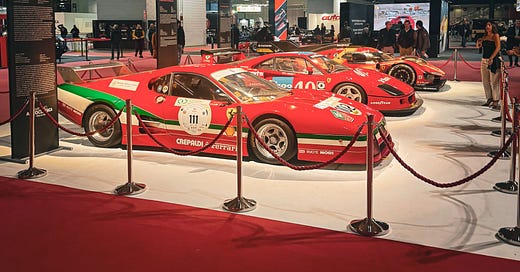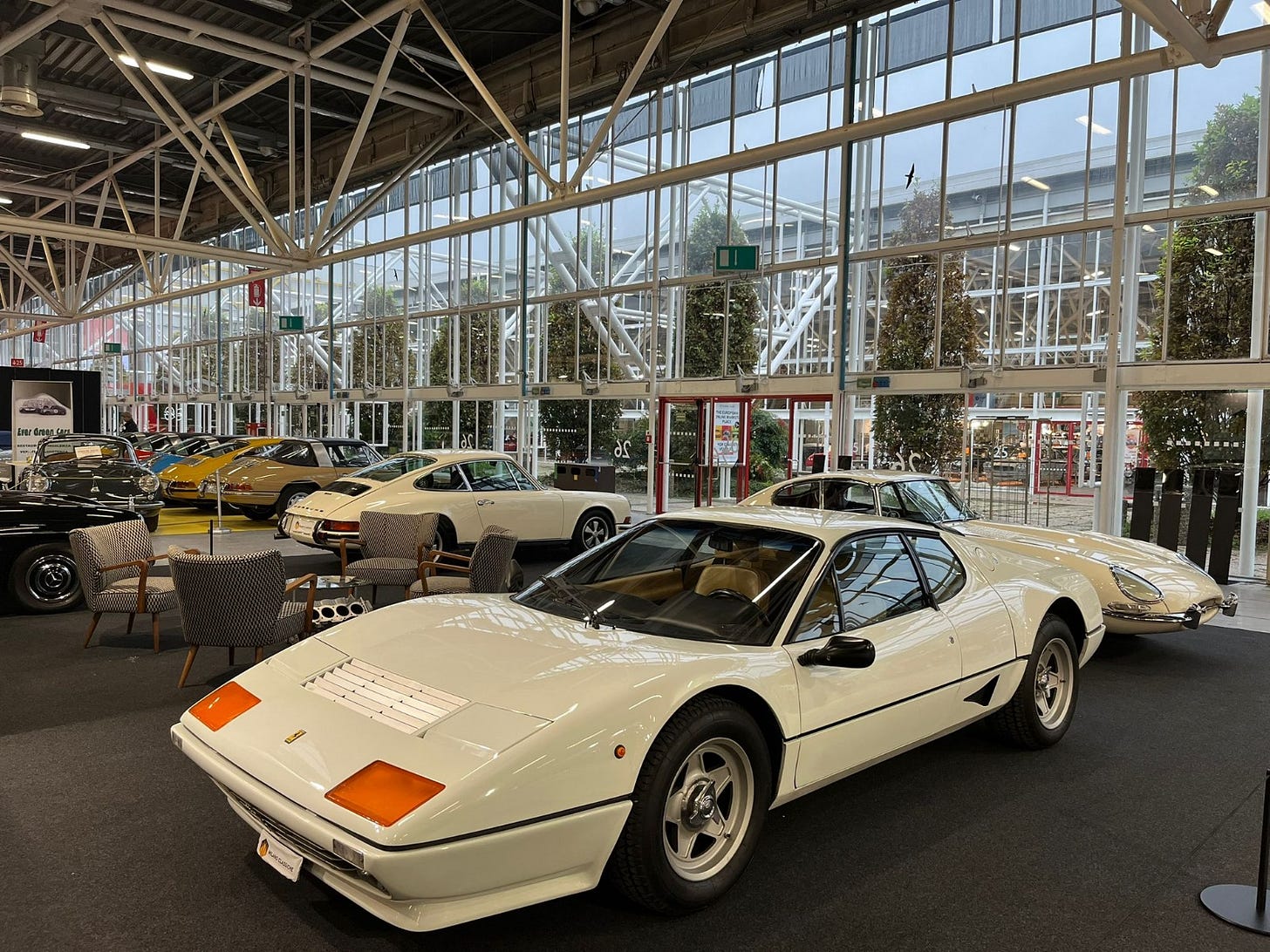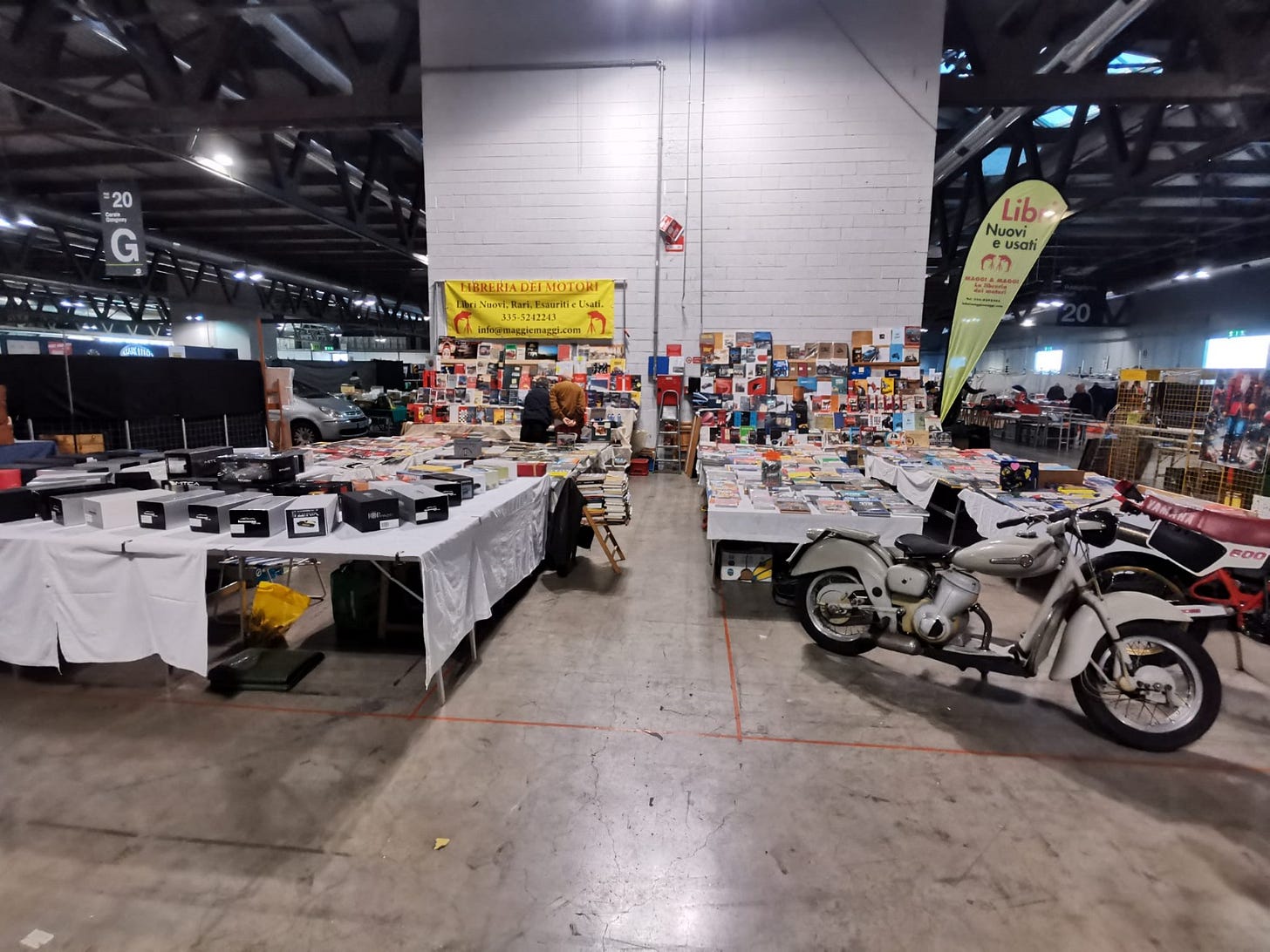Milano AutoClassica vs Auto e Moto d'Epoca - Our final take
Italy’s classic car scene saw a packed October and November, with two major events showcasing the variety of the market: Auto e Moto d’Epoca in Bologna and Milano AutoClassica in Milan. While both events serve as cornerstones of the Italian (and broader European) collectible car calendar, they presented two very different experiences, each with its own insights for collectors and investors.
Here, we’ll delve into the key takeaways from each event, examining their strengths, differences, and what they reveal about the current dynamics of the classic car market.
The Numbers
Auto e Moto d’Epoca in Bologna, held in late October, featured over 7,000 vehicles, ranging from pre-war classics to vintage motorcycles. Spanning 14 large exhibition halls, the event offered visitors an engaging experience.
By contrast, Milano AutoClassica, held at Fiera Milano, occupied less than half the space of its Bologna counterpart. The event’s more compact setup allowed for a more concentrated experience but also underscored its differing focus and scale.
Local Meets Global Audience
Both events drew international attention, a positive trend after years of pandemic-related constraints. Bologna stood out for its ability to attract a more diverse international crowd, rekindling its status as a truly global fair.
Milano, while also seeing an increase in foreign visitors, appealed to a broader audience that included newcomers and casual attendees. While this shift offers opportunities to grow market participation, it also risks diluting the focus on collectors and buyers. For many, Milano felt more like a leisurely Sunday outing than a high stakes trading ground for collectible cars.
Classics vs. Modernity
The contrast between the two events was most apparent in the vehicles on display. Bologna showcased a wide array of classic cars, with a strong emphasis on authenticity and legacy. From rare, preserved vehicles to high-quality conservative restorations, the offerings reflected a deep understanding of the collector market. Porsche 911s, in particular, stood out as top performers in terms of sales, strengthening their reputation as liquid and long-term investments.
Milano, on the other hand, leaned heavily toward modern cars and youngtimers, as well as several restomods, while classics took a back seat. Even Tesla made an appearance, showcasing the Cybertruck. While this focus on newer models may appeal to younger or first-time buyers, it signaled a departure from the event's traditional emphasis on classics.
Crowded Display
A common issue at both events was the tendency to pack cars too tightly within the allocated spaces. While the high number of vehicles on display might seem impressive at first glance, it often detracted from the overall experience. Both in Bologna and in Milano, potential buyers were unable to open doors, sit in the cars, or properly inspect the interiors – essential aspects when considering a purchase. This overcrowding created a more chaotic atmosphere, undermining the exclusivity and focus that a premium classic car event should aim to deliver.
Market Dynamics
Conversations with sellers at both events revealed key insights into market activity. Bologna’s exhibitors reported strong sales volumes, mainly driven by well-documented cars with high originality. The event reaffirmed its role as a marketplace for serious transactions, appealing to collectors and traders.
In contrast, sellers at Milano AutoClassica reported fewer transactions, even for traditionally high-performing models like Porsche 911s. This suggests that Milano’s audience, while broader, may not yet have the focus of Bologna’s collector and buyer base.
Spare Parts
One striking contrast between the two fairs was the approach to spare parts. Auto e Moto d’Epoca in Bologna dedicated an entire pavilion to spare parts retailers, while Milano offered only a fraction of the space for spare parts retailers. The limited selection reduced its appeal for those specifically looking for spares, as the narrow range of vendors and parts simply couldn’t compete with Bologna’s more comprehensive marketplace. For collectors and restorers, Milan’s spare parts section felt inadequate, highlighting the importance of scale and variety in meeting the needs of the classic car community.
Event Atmosphere
Bologna’s ambiance reflected its status as a premier classic car event, from the natural lighting to the champagne bars hosted by the retailers elevating the experience. It’s a fair that knows its audience and caters to them with precision, blending practicality with luxury.
Milano, while promising, has room to refine its presentation. The event could benefit from higher-quality lighting and a more curated ambiance, such as the addition of carpets in walking areas, to better align with the expectations of high-end collectors and international visitors.
Takeaways for Collectors and Investors
Both events provided valuable insights into the shifting dynamics of the collectible car market:
Bologna remains the destination for seasoned collectors seeking high-quality classics, offering strong transaction opportunities and a wider stage for the market.
Milano could possibly offer a glimpse into the future, with its focus on younger audiences and modern vehicles, but it needs to balance this inclusivity with a stronger focus on premium experiences and collector-grade inventory.
As the market evolves, these events serve as complementary windows into its current state and future direction. For investors, attending both fairs offers a comprehensive understanding of the trends shaping the industry.






